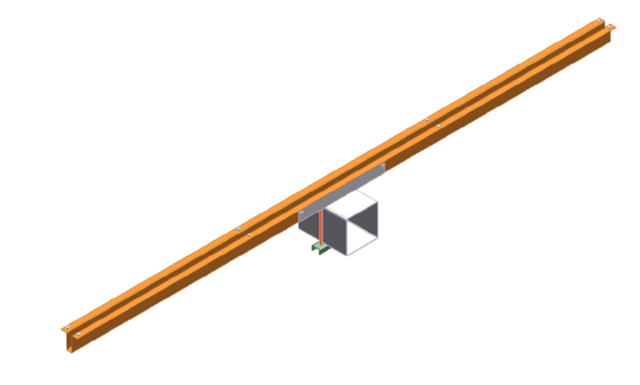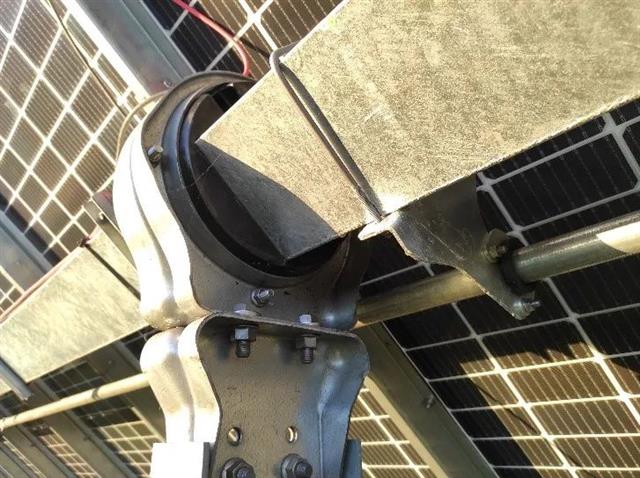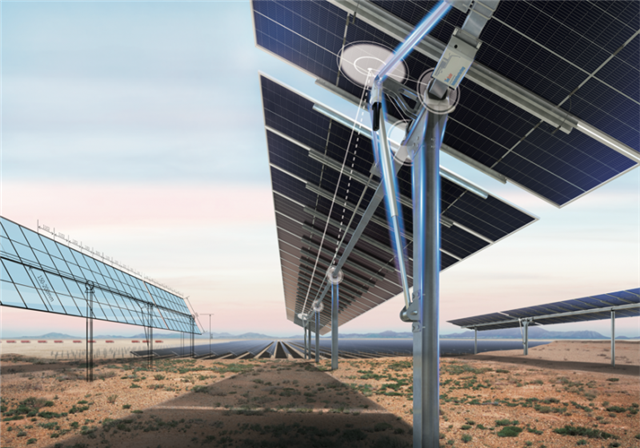Wind tunnel test is an important means to carry out wind engineering research of tracker and ensure product reliability. Through the static pressure measurement test, the static pressure coefficient and wind torsion coefficient of the tracker under different incoming flow conditions can be obtained; dynamic buffeting analysis can help learn about the dynamic amplification factor; as well as the aerodynamic stability of the tracker (flutter, vortex vibration, torsional divergence, etc.), which can be studied and evaluated through full aeroelastic test. The results of wind tunnel test will affect the design of tracker, including the optimization of key structural parts and the formulation of wind protection strategy.
The location of gale protection is determined by the critical wind speed obtained from the full aeroelastic test. If the protection angle is high, the static wind load on the module increases. At this time, the bearing capacity of modules to static wind load shall be considered. On the other hand, if the protection angle is low, the wind-induced vibration effect will be more significant. Thus the possibility of aerodynamic instability of the tracker needs to be considered. The results of wind tunnel tests (piezometric test, segmental test and full aeroelastic test) are considered in the optimization of structural members.
The performance of the mounting and tracker under strong wind conditions is also needed to be taken into account to determine the shape, material and length of the column. The location of strong wind protection will affect the number and section type of columns. The span between columns will affect the aerodynamic stability of the tracker. If a standard column is used, the span will affect the load on each column. Increasing the span between columns helps to reduce piling and soil problems during installation.
The purlin is affected by the chord length of the tracking support. For 1P product – Agile, the chord length equals to the module length; For 2P product – Vanguard, the chord length is twice the length of the modules plus the distance between the modules.

Purlin
The size of the existing high-power modules is large, which reduces the natural frequency and stiffness of the structural parts, and then reduces the stability of the tracker. The long-term wind-induced vibration will lead to the loosening of the truss connection on the torque pipe, which will lead to the failure of the support structure or the damage of modules.
TrinaTracker has improved the design of purlins and optimized the use of steel. The firm purlin can effectively prevent micro cracks and looseness of modules and ensure the stability of tracker. The solid torque tube can increase the natural frequency of the system and reduce the influence of buffeting and the possibility of aerodynamic instability.
In addition, the longer the tracker, the lower its torsional stiffness, which will lead to an increase in torque. To reduce this risk, TrinaTracker ensures the torsional stiffness of the system by increasing the section size of the torque tube.
TrinaTracker’s patented product, spherical bearing, has greater terrain adaptability, so as to protect the tracker from extreme wind load and gravity load.

Spherical bearing
The multi-point drive system can effectively reduce the torsional load caused by buffeting. The system is composed of multiple driving sites with self-locking function, which can improve the wind resistance of the tracker and improve the torsional stiffness of the tracker at the critical wind speed.

Multipoint-driven system
The comprehensive analysis of static and aeroelastic effects is helpful to standardize the structural design of tracker and develop customized tracker layout scheme. In the whole support array, the wind has different effects on the support structure at different positions. Considering the shielding effect, there is a certain difference in the pressure coefficient/ wind torsion coefficient between the peripheral tracker and the inner tracker, and the peripheral coefficient is greater. Therefore, the peripheral tracker will be designed to be stronger than the inner tracker. The tracker at the edge of the array is a combination of peripheral and inner design. Its peripheral area is designed to be relatively solid and can withstand large wind load.
The integrated alarm system can reduce the potential risk introduced by the load. The activation/ deactivation of the wind load alarm is manually controlled by the NCU sensor and/ or the operator. The tracker is rotated to the protection position accordingly to cope with the influence of windy weather.
You may also be interested in: Trina Solar I: TrinaTracker: What is wind tunnel test?
TrinaTracker II: Why wind tunnel testing of tracker is crucial?


